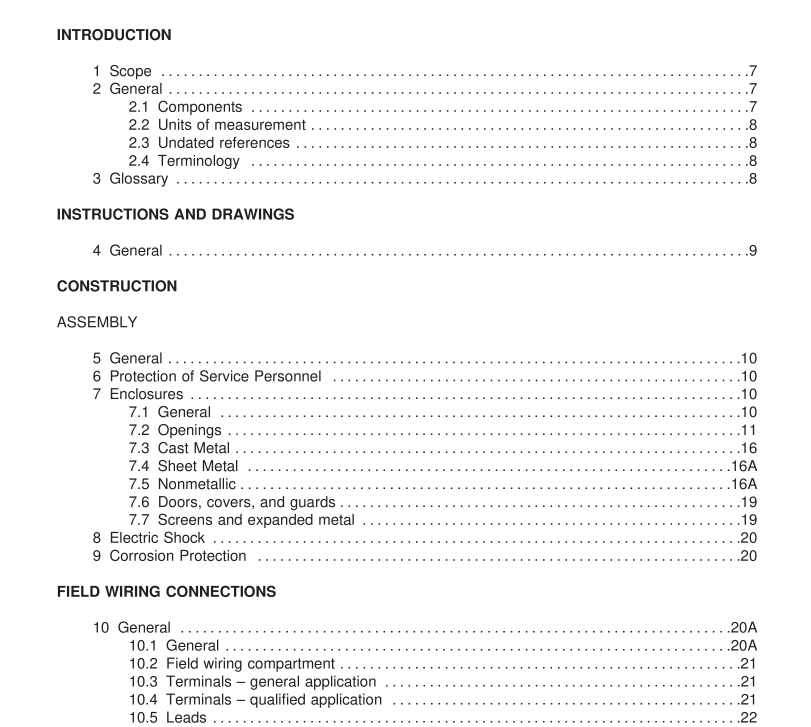UL 636:2010 free download Holdup Alarm Units and Systems
1.1 These requirements cover holdup alarm systems of the remote-station type intended for installationin banks, stores, cashiers’ cages, pay offices, and the like to provide a means of transmitting a silent callfor help in the event of interior robbery.These systems are divided into the three classes listed in 1.2 andare defined under Extent of Protection, Section 87.
1.2 The three classes are: Bandit-Resisting Enclosure and Alarm,Semiautomatic Alarm,and ManualAlarm.
1.3 A product that contains features, characteristics, components,materials, or systems new or differentfrom those covered by the requirements in this standard, and that involves a risk of fire or of electric shockor injury to persons shall be evaluated using appropriate additional component and end-productrequirements to maintain the level of safety as originally anticipated by the intent of this standard.Aproduct whose features,characteristics,components,materials,or systems conflict with specificrequirements or provisions of this standard does not comply with this standard.Revision of requirementsshall be proposed and adopted in conformance with the methods employed for development, revision, andimplementation of this standard.
1.3 revised March 30,2001
2 General
2.1 Components
2.1.1 Except as indicated in 2.1.2, a component of a product covered by this standard shall comply withthe requirements for that component. See Appendix A for a list of standards covering components usedin the products covered by this standard.
2.1.1 revised March 30,2001
2.1.2 A component is not required to comply with a specific requirement that:
a) Involves a feature or characteristic not required in the application of the component in theproduct covered by this standard, or
b) ls superseded by a requirement in this standard.
2.1.2 revised March 30, 2001
2.1.3 A component shall be used in accordance with its rating established for the intended conditions ofuse.
2.1.3 revised March 3o, 2001
2.1.4 Specific components are incomplete in construction features or restricted in performancecapabilities.Such components are intended for use only under limited conditions, such as certaintemperatures not exceeding specified limits, and shall be used only under those specific conditions.
2.1.4 revised March 30, 2001
2.2 Units of measurement
2.2.1 Values stated without parentheses are the requirement. Values in parentheses are explanatory orapproximate information.
2.2.1 revised March 30,2001
2.2.2 Unless otherwise indicated, all voltage and current values mentioned in this standard are rms.2.3 Undated references
2.3.1 Any undated reference to a code or standard appearing in the requirements of this standard shallbe interpreted as referring to the latest edition of that code or standard.
2.4 Terminology
2.4.1 The term “product”as used in this standard refers to all types of holdup alarm units.3 Glossary
3.1 For the purpose of this standard the following definitions apply.
3.2 ALARM INITIATING DEVICE – A switch operated by hand or foot, by key, by removal of currencybills, or by other means to initiate a holdup alarm signal.
3.3 CIRCUITS,ELECTRICAL:
a)HIGH-VOLTAGE – A circuit involving a potential of not more than 600 volts and havingcircuit characteristics in excess of those of a low-voltage power limited circuit.
b) Low-VOLTAGE – A circuit involving a potential of not more than 30 volts AC, rms, 42.4volts DC or AC peak.
c) POWER LIMITED – A circuit whose output is limited as specified in Tables 3.1 and 3.2.Thepower limitation shall be provided by the construction of the transformer, a fixed impedance,anoninterchangeable fuse, a nonadjustable manual reset circuit protective device, or a regulatingnetwork.
UL 636:2010 free download
